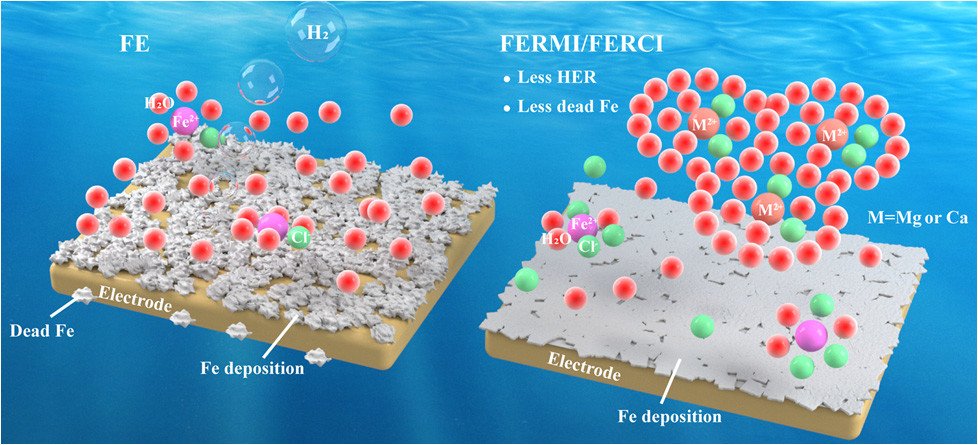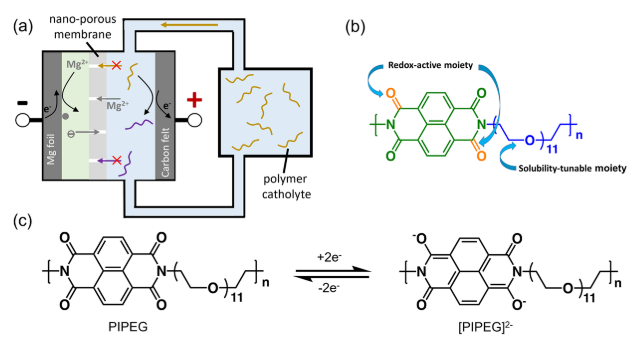Renewables (wind, solar etc) are energy sources that are carbon emission free. To address the global warming problem, replacing our existing energy generation (mostly by fossil fuel) is an imperative.
Due to their intermittency of solar and wind, they need to be coupled with energy storage to be integrated into the grid. Low cost energy storage is the key to address this challenge. Among all energy storage technologies, redox flow battery stands out due to its low cost, scalability, and the ability to decouple energy from power.
Research highlight: Fe metal battery
None of the commercialized rechargeable battery technologies (Li-ion battery, all-vanadium flow battery, Pb-acid battery, Zn-Br etc.) are adequate to store the massive renewable electricity in the future from the perspective of material availability. Iron (Fe) metal battery is especially suitable for addressing this massive challenge because it is the second most-abundant metal element in earth crust, and it is the most produced metal (3.2 billion ton per year). However, aqueous Fe metal batteries have limited cycle life because of the low coulombic efficiency (CE) of Fe metal anode.
By engineering the electrolyte, we significantly increase the coulombic efficiency of Fe metal anode, which paves the way for developing long life-span Fe metal batteries for renewable electricity storage.
Read more: New electrolytes enable rechargeable Fe metal batteries.
anion-rich electrolyte enables unprecedented Fe battery efficiency
Research highlight: Magnesium-organic flow battery
Combining iodine chemistry with Mg anode, we demonstrated the first redox flow battery based on Mg chemistry, which shows a high rate performance. More.
By combining a Mg foil anode, a porous membrane and a polymer solution catholyte, we demonstrated the first Mg-polymer redox flow battery. More.


